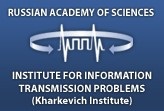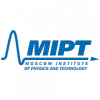| Thursday, September 10 17:00 - 18:00 Flagman 4 | Session: BioInformatics: MutationsBioinformatics |
| Chair: Dr.Sci. Mikhail Gelfand |
Vladimir Seplyarskiy, Georgii Bazykin
APOBEC induced mutations are strongly enriched in DNA regions replicating as the lagging strand
Abstract: APOBEC3B, a cytidine deaminase of the APOBEC family, is one of the main factors causing mutations in human cancers1-4. APOBEC3B specifically deaminates cytosines on single stranded DNA (ssDNA)3,5-8. A fraction of the APOBEC3B-induced mutations occur as clusters ('kataegis') in ssDNA produced during reparation of double-stranded breaks (DSBs). However, the properties of the remaining 87% of APOBEC3B induced mutations, specifically, the source of the ssDNA and the genomic distribution, are largely unknown1,3. Our analysis of genomic1,9 and exomic (TCGA) cancer databases demonstrates that the DNA regions which are usually lagging during DNA replication, and therefore temporarily exist as ssDNA10-12, are the major target of APOBEC3B, carrying >33% of dispersed APOBEC3B-induced mutations. Unexpectedly, while methylated cytosine is generally more mutation-prone than non-methylated cytosine, we report that methylation reduces the rate of APOBEC3B-induced mutations by a factor of ~2. Lastly, we show that in cancers with intensive APOBEC3B-induced mutagenesis, there is almost no increase in mutation rates in late replicating regions (contrary to other cancers); as late-replicating regions are depleted in exons, this results in a 1.3-fold higher fraction of mutations falling into exons. This study provides novel insights into the APOBEC3B-induced mutagenesis, and suggests that mutational processes are severely perturbed in genomes of cancers with the APOBEC3B signature.
Nadezhda Terekhanova, Georgii Bazykin, Ruslan Soldatov, Vladimir Seplyarskiy
Evolution of local mutation rate and its determinants
Abstract: Knowledge of mutation rate heterogeneity within the human genome is very applicable in genome-wide association studies. Mutation rate variation is known to be associated with the changes of DNA features; however the main portion of it remains unexplained. Here we show that the correlation between human and chimp 1 Mb regions ~95% and becomes ~30 % lower when we compare human mutation rate with mutation rate in the Strepsirrhini clade. Recombination rate and in a lesser extent replication timing and DNase-hypersensitive sites possess the excess of explained variance for mutation rate in regions in which it changed recently. Although, landscapes of genomic features accumulate fewer changes compared with the landscape of the mutation rate, we found that shifts in distributions of genomic features correlate significantly with the changes in the local mutation rate between species in 1 Mb windows. These findings should be taken into account while constructing evolutionary models.








